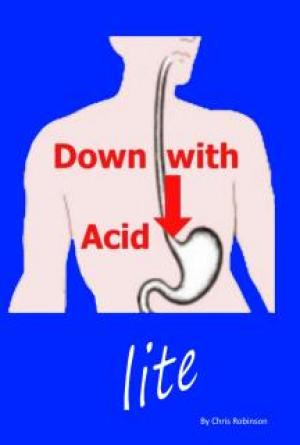2. Hyperhomocysteinemia
Trimethylglycine may aid folic acid and vitamin B12 in helping to reduce elevated levels of homocysteine (1,000
mg, two or three times daily). Betaine has been reported to be helpful in some patients whose homocysteine
levels did not improve with supplementation with folic acid, vitamin B6 and vitamin B12.17 High levels of
homocysteine increases risk of heart disease, and therefore, betaine supplementation should be considered as an
adjunctive treatment in patients whose elevated homocysteine levels do not respond adequately to
supplementation with B-vitamins alone (see folic acid in this document for a detailed discussion regarding
hyperhomocysteinemia).
Dosage Ranges
1. Liver Disease: 1,000 mg to 2,000 mg, three times per day.10,11,12,13,14,15,16
2. Hyperhomocysteinemia (unresponsive to folic acid, vitamin B6 and vitamin B12): 1,000 mg, two to three times per
day.17
3. General Wellness Support: 500-1,000 mg per day.10-16
www.meschinohealth.com


117
Meschino Health Comprehensive Guide to Accessory Nutrients and Essential Oils
Accessory Nutrients and Essential Oils
Adverse Side Effects and Toxicity
No side effects have been reported at recommended levels of intake. Betaine is a very non-toxic compound.
Drug-Nutrient Interactions
A Betaine-containing substance in the urine (glycine-betaine) has been shown to reduce the ef ectiveness of antibiotic
therapy for urinary tract infections (UTI), and compounds similar to betaine are known to enhance the growth of
bacteria that cause UTIs. Thus, betaine supplementation should not be used during active urinary tract infects or in
concert with antibiotics intended to treat UTIs.18,19
1. Selhub J. Homocysteine metabolism. Ann Rev Nutr 1999;19:217-46.
2. Barak AJ, Tuma DJ. Betaine, metabolic by-product or vital methylating agent? Life Sci 1983;32:771-4.
3. Chambers ST. Betaines: their significance for bacteria and the renal tract. Clin Sci 1995;88(1):25-7.
4. Junnila M, Barak AJ, Beckenhauer HC, Rahko T. Betaine reduces hepatic lipidosis induced by carbon tetracholoride in Sprague-Dawley
rats. Vet Hum Toxicol 1998;40:263-6.
5. Kim SK, Kim YC, Kim YC. Effects of singly administered betaine on hepatotoxicity of chloroform in mice. Food Chem Toxicol
1998;36:655-61.
6. Barak AJ, Beckenhauer HC, Matti J, Tuma DJ. Dietary betaine promotes generation of hepatic S-adenosylmethione and protects the
liver from ethanol-induced fatty infiltration. Alcohol Clin Exp Res 1993;17:552-5.
7. Murakami T, Nagamura Y, Hirano K. The recovering effect of betaine on carbon tetrachloride-induced liver injury. J Nutr Sci Vitaminol
1998;44:249-55.
8. Barak AJ, Beckenhauer HC, Tuma DJ. Betaine, ethanol, and the liver: a review. Alcohol 1996;13:395-8[review].
9. Barak AJ, Beckenhauer HC, Badakhsh S, Tuma DJ. The effect of betaine in reversing alcoholic steatosis. Alcohol Clin Exp Res 1997;
21:1100-2.
10. Semmler F. Treatment of liver diseases, especially of fatty liver with betaine citrate. Ther Ggw 1977;116:2113-24 [in German].
11. Kandziora J. Therapeutic experience with the lipotropic hepatic drug Flacar in the internal medicine practice. AFA 1976;5f2:1561-3 [in
German].
12. Babucke G, Sarre B. Clinical experience with betain citrate. Med Klin 1973;68:1109-13 [in German].
13. Hilt G, Tuzin P. Clinical results using betaine citrate (Flacar) in fatty livers. Med Monatsschr 1973;27(7):322-5 [in German].
14. Nicrosini F. Therapeutic activity of betaine aspartate. Clin Ter 1972;15;61:227-36 [in Italian].
15. Cairella M, Volpari B. Betaine aspartate in the therapy of liver diseases. Clin Ter 1972;60:513-34 [in Italian].
16. Cachin M, Pergola F. Betaine aspartate in the hepato-digestive domain. Sem Ther 1972;60:513-34 [in Italian].
17. Healthnotes, Inc. 2001. www.healthnotes.com : Betaine.
18. Peddie BA, Chambers ST. Effects of betaines and urine on the antibacterial activity of aminoglycosides. J Antimicrob Chemother
1993;31:481-8.
19. Chambers ST, Peddie BA, Randall K, Lever M. Inhibitors of bacterial growth in urine: what is the role of betaines? Int J Antimicrob
Agents 1999;11:293-6 [review].
www.meschinohealth.com


118
Meschino Health Comprehensive Guide to Accessory Nutrients and Essential Oils
Accessory Nutrients and Essential Oils
www.meschinohealth.com











